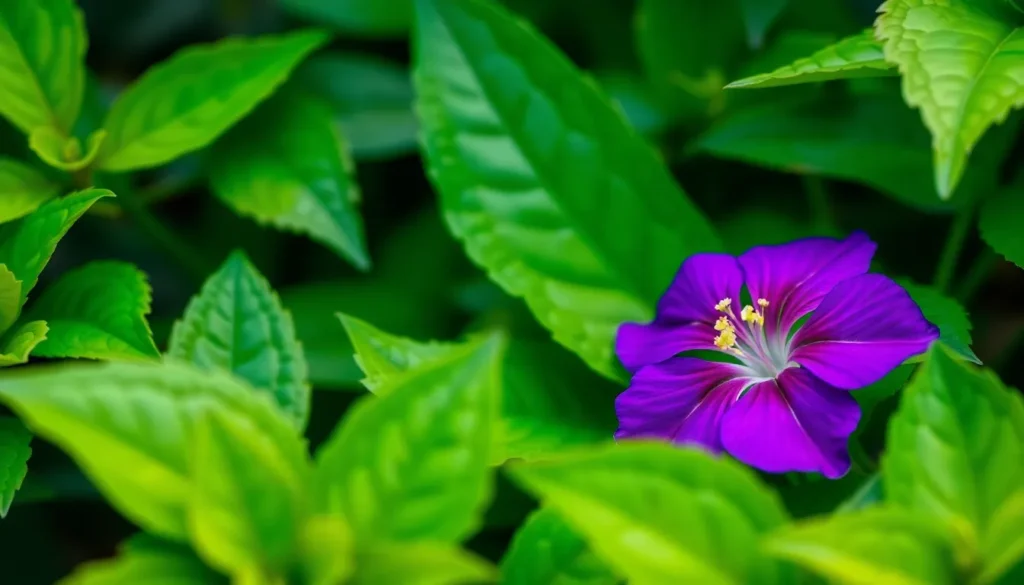Imagine walking through a world where colors dance around like confetti at a parade. But wait—does purple even belong to this vibrant festivity? It’s a question that tickles the mind and sends color enthusiasts into a tizzy. While we all know purple as the regal hue of grapes and the beloved shade of a certain fictional character, one can’t help but wonder: is it real or just a figment of our imagination?
Table of Contents
ToggleUnderstanding Color Perception
Color perception hinges on how the human eye interprets light. It involves complex interactions between light, our environment, and the brain. This exploration of color helps unravel whether purple truly exists within the visible spectrum.
The Science of Color
Human vision perceives color through specialized cells in the retina known as cones. Three types of cones exist, each sensitive to different wavelengths: short (blue), medium (green), and long (red). Colors emerge when these cones communicate information about light to the brain. Thus, color is not an inherent property but a manifestation of light wave interactions. Research indicates around 10 million distinct colors are possible when stimuli combine. Purple, often characterized by its association with blue and red, presents a unique blend in this spectrum.
The Role of Light and Wavelengths
Light properties play a critical role in color perception. Visible light ranges from approximately 380 to 750 nanometers in wavelength. Within this range, colors correspond to specific wavelengths. Purple sits at the edge of this spectrum, often created through additive color mixing. This process occurs when blue light mixes with red light, producing the perception of purple. However, no single wavelength solely defines purple, making it a non-spectral color. Consequently, perceiving purple relies on both light source and individual retinal responses.
Historical Perspectives on Purple

Throughout history, purple’s presence has left a significant mark on various cultures and societies. The color often symbolizes nobility, luxury, and spiritual significance.
Cultural Significance of Purple
In many ancient societies, purple dye was rare and expensive. Ancient Egyptians used it for garments of the elite. Similarly, Roman emperors wore purple to denote their status. Different cultures view purple with reverence, often associating it with religious ceremonies and rituals. The color embodies power and privilege, making it a favored choice for royal families. People still connect purple with sophistication and creativity, influencing modern branding and design.
Purple in Art and Literature
Artists have long embraced purple for its emotional depth. In paintings, it can evoke feelings of passion and mystique, providing contrast or harmony within compositions. Literature also frequently highlights purple, representing spirituality or transformation in character arcs. Classic works often use purple in symbolic contexts, emphasizing themes of love and ambition. Modern authors continue to draw on purple’s rich connotations, illustrating characters’ complexities and the interplay of light and shadow in narratives.
The Existence of Purple in Nature
The color purple exists in various forms throughout nature. Many natural sources create distinct shades of purple, captivating the eye and influencing perception.
Natural Sources of Purple
Flowers frequently showcase vibrant purple hues. Violets, lilacs, and lavender are examples of plants that produce this color. Minerals also contribute, with amethyst being a notable purple gemstone. Certain fruits, like eggplants and grapes, present deep purple skins, highlighting the diversity of this color in the natural world. Additionally, some animals reveal purple through their feathers or skin, such as the purple finch and certain species of jellyfish. These elements demonstrate that purple exists not just conceptually but also tangibly within the environment.
The Psychology of Purple
Purple evokes a range of emotions and associations. It often represents creativity and uniqueness, appealing to individuals’ desire for originality. Many people associate purple with spirituality, connecting it to introspection and meditation. Branding strategies also utilize purple to convey luxury and sophistication. Companies often choose purple in their logos to evoke feelings of richness. Events and gatherings frequently employ purple to create atmospheres of calm and introspection, further illustrating its impact on emotional response. These psychological connections demonstrate the powerful influence of purple on perception and behavior.
Modern Interpretations of Purple
Modern interpretations of purple extend beyond traditional symbolism, influencing various fields such as technology and fashion.
Digital Representations of Color
Digital technology brings new dimensions to how users perceive purple. Color models like RGB and HEX facilitate precise representation in digital media. Many designers utilize specific codes, such as #800080 for standard purple, to maintain consistency across platforms. Various applications use this hue to evoke creativity or luxury, appealing to targeted audiences. Examining the use of purple in user interface design shows its effectiveness in attracting attention while providing a calming effect. With increased reliance on digital visuals, purple continues to play a significant role in shaping online identities and experiences.
Purple in Fashion and Design
Fashion and design consistently embrace purple for its regal connotations and emotional depth. Designers often incorporate bold shades, like violet and lavender, to create striking visual statements. Many brands leverage this color for its associations with creativity and originality, aiming to stand out in competitive markets. Events featuring purple themes frequently evoke sophistication and intrigue, enhancing overall atmosphere. Seasonal trends also reflect varied uses of purple, from vibrant tones in summer collections to muted shades in fall designs. This versatility highlights purple’s ability to adapt and resonate with diverse styles.
The exploration of purple reveals its fascinating duality as both a tangible color and a rich concept steeped in history and emotion. Its unique position in the color spectrum showcases how perception is influenced by light and individual experience.
Purple’s significance stretches beyond mere aesthetics into realms of culture and psychology, highlighting its power to evoke deep feelings and associations. In nature, art, and modern design, purple continues to captivate and inspire, proving that it’s much more than just a figment of imagination.
As society evolves, purple remains a dynamic force, adapting to new interpretations while retaining its royal essence and emotional depth.





